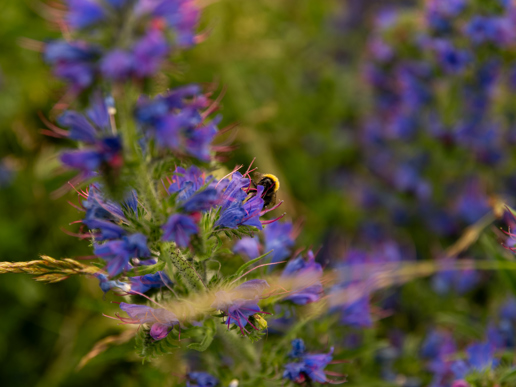Stacking BNG units. Defra's genuis concept behind planning for long-term nature-recovery

As the Biodiversity Net Gain (BNG) market matures, a powerful opportunity is emerging that could redefine how we deliver long-term environmental outcomes, stacking BNG units.
At Ground Control Evergreen, we’re focused on helping landowners, investors, and developers unlock the full potential of the UK’s nature markets.
To explore how stacking can transform the economics of habitat creation and nature recovery, we spoke to Julia Baker, Technical Director at Mott MacDonald and one of the UK’s leading voices in BNG policy and implementation.
What is stacking in BNG?
Stacking allows landowners to generate new BNG units as habitats mature through different ecological stages. Julia explains it as one of the “genius” parts of the BNG framework that many still overlook.
“When you can stack your BNG, you go from a very low baseline, say, poor-quality grassland, to moderate condition. Once that grassland hits that moderate condition, that’s your time target condition. You can baseline it, and that’s your second stack for BNG. Then, when it reaches good condition, you can sell those units again.”
In other words, stacking BNG units enables multi-phase habitat enhancement, allowing landowners to plan for long-term, recurring environmental and financial returns.
Why stacking is a game-changer
BNG is often discussed in the context of 30-year commitments — but as Julia highlights, stacking pushes us to think much further ahead.
“It’s absolutely great because what we’re talking about is the big question — what happens after the 30 years? Stacking helps us plan for that future.”
By designing habitats that evolve over 60, 90, or even 120 years, landowners can take a masterplanning approach to nature recovery, creating dynamic, self-sustaining ecosystems that continue to deliver measurable biodiversity outcomes long after initial project completion.
Masterplanning for nature: long-term vision, lasting impact
Stacking empowers land managers to create a strategic roadmap for habitat improvement, from initial restoration to mature ecosystems.
“You can really master plan for nature,” Julia says. “Long-term thinking — what’s going to be that successful habitat over 90 or 120 years?”
This long-term perspective perfectly aligns with Ground Control Evergreen’s mission — helping clients view land not just as an asset, but as a living system capable of generating continuous environmental, social, and financial value.
Maintaining integrity in nature markets
As the nature credit market expands, a crucial question arises: can BNG units be stacked alongside other credits, such as carbon or nutrient neutrality?
Julia’s stance is clear:
“You can’t be paid for doing the same thing twice.”
Stacking across different ecosystem services is possible, for example, combining BNG with carbon sequestration, but only when each credit represents a distinct and additional environmental benefit.
“Within the same landholding, as long as there are different habitat interventions and it’s clear what’s being delivered, that’s good practice. What we’re talking about is integrity in the nature markets, and that’s essential.”
Attracting private investment and green finance
The ability to stack BNG units offers more than ecological value; it’s a bridge to blended green finance and private investment in nature recovery.
“The more we can get private investment into that, the more we can think about green blended finance options. That’s exactly where we should be heading.”
By integrating BNG stacking into investment strategies, landowners and businesses can help scale up the UK’s natural capital markets while securing long-term revenue streams tied to measurable environmental outcomes.
When can stacking happen?
Under DEFRA’s current BNG guidance, stacking becomes applicable when a habitat reaches its time-target condition.
“The government guidance is at the time to target the condition,” Julia notes. “So after, say, 10 or 15 years, once the habitat reaches its target condition, you can baseline it again and go from there.”
This flexibility gives project developers and landowners a clear pathway to plan phased habitat improvements, each with its own measurable, tradable biodiversity value.
The opportunity ahead
Stacking within Biodiversity Net Gain is one of the most innovative and underused mechanisms in the UK’s nature markets.
Stacking offers a blueprint for credible, scalable, and long-term biodiversity recovery backed by scientific rigour, ecological integrity, and sustainable finance.
At Ground Control Evergreen, we share that enthusiasm. By promoting good science, transparent practice, and long-term ecological thinking, we believe stacking can help make nature recovery both viable and vibrant for generations to come.
Speak to us about BNG for your development or project
Get in touch
Ground Control’s Wildfell Habitat Bank Secures Biodiversity Boost with Plantlife Partnership

Growth of the Biodiversity Net Gain (BNG) Metric: Insights from Natural England’s Nick White





